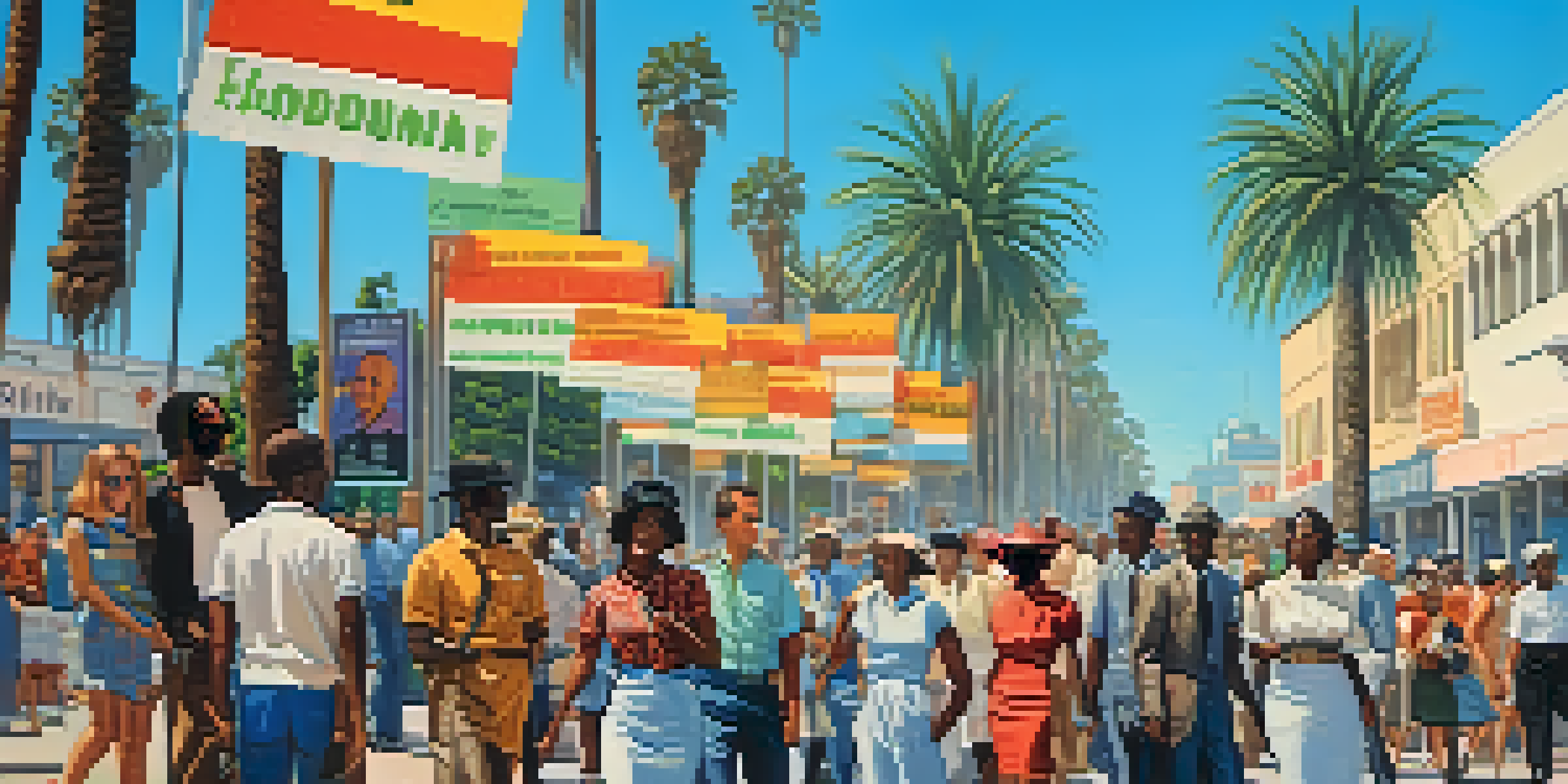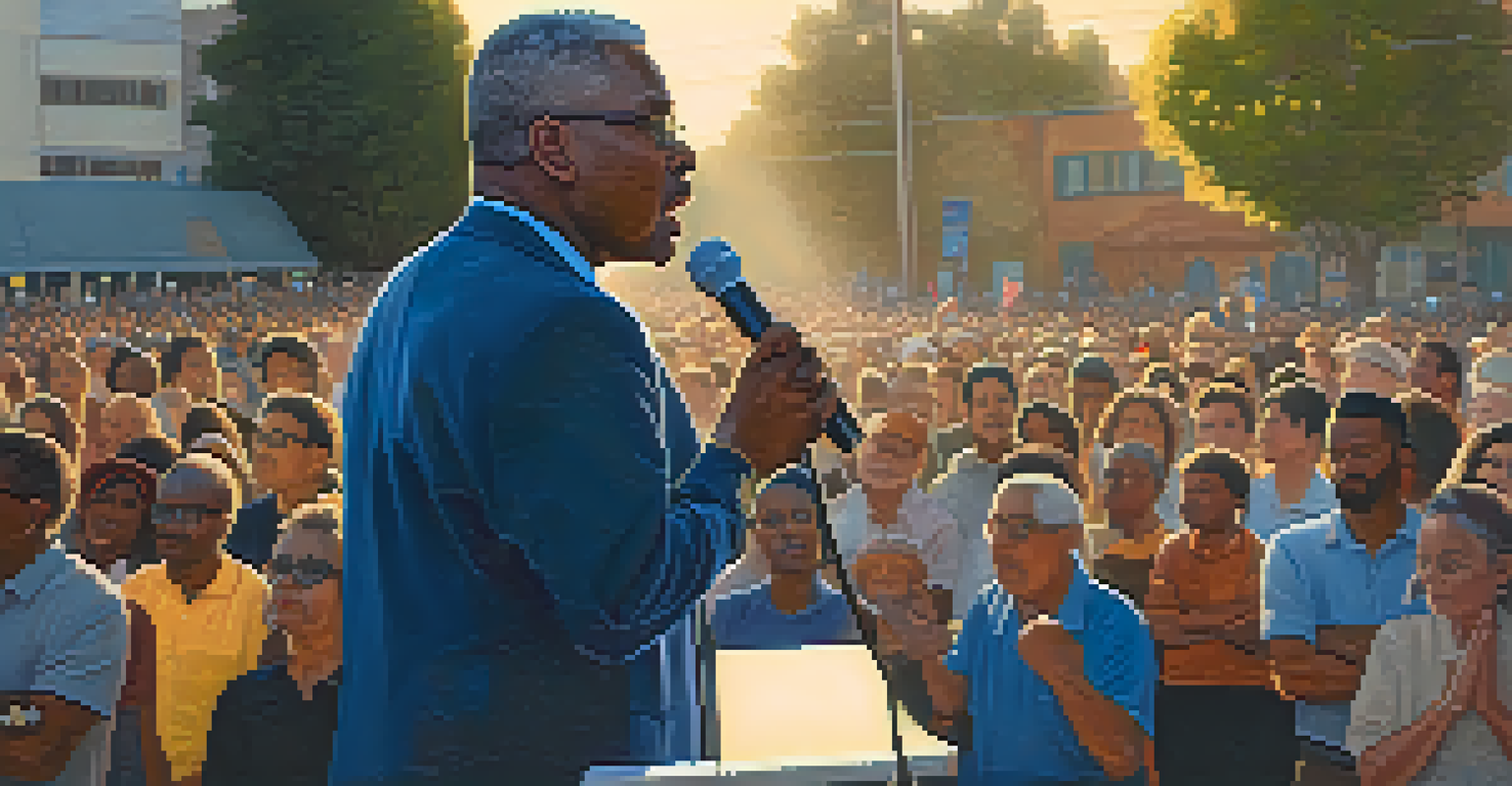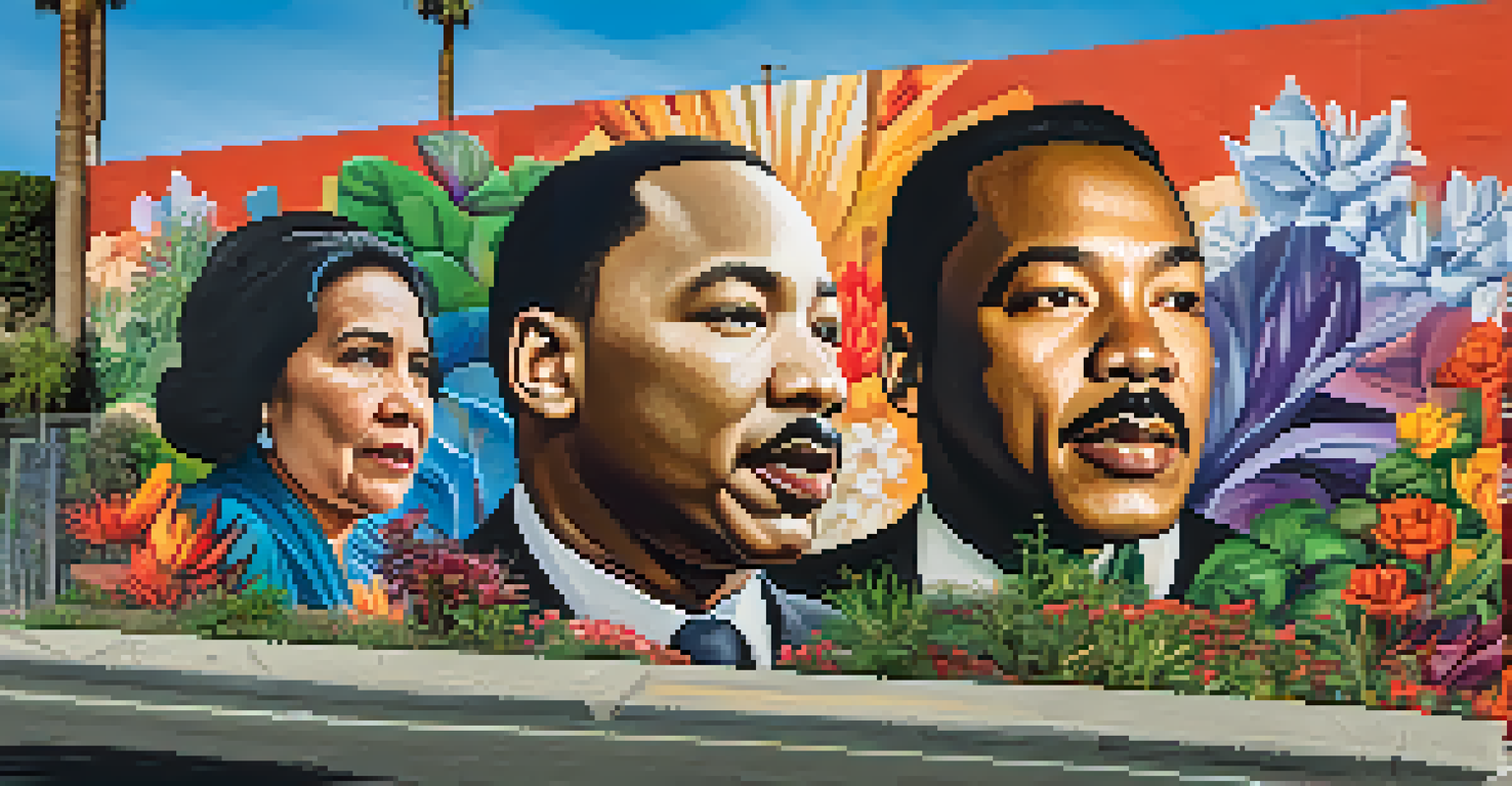The Civil Rights Movement and Its Influence in LA

The Origins of the Civil Rights Movement in LA
The Civil Rights Movement, which began in the 1950s and 1960s, aimed to dismantle racial segregation and discrimination across the United States. In Los Angeles, this movement was fueled by a diverse group of activists who sought equality and justice, particularly for African Americans and Latinos. Key figures like Bayard Rustin and Martin Luther King Jr. visited LA, inspiring local leaders to mobilize their communities for change.
Injustice anywhere is a threat to justice everywhere.
In the post-World War II era, Los Angeles saw a significant influx of African Americans migrating from the South, seeking jobs and better living conditions. However, they faced systemic discrimination in housing, education, and employment opportunities. This stark reality ignited a series of protests and demonstrations, as activists organized to demand equal rights and challenge the status quo.
The establishment of organizations like the Los Angeles chapter of the NAACP and the Congress of Racial Equality (CORE) provided a platform for these voices. They worked tirelessly to combat racial injustice, leading to significant local changes that reflected the broader national struggle for civil rights.
Key Events That Shaped the Movement in LA
One of the most pivotal events was the Watts Riots in 1965, which erupted following the arrest of an African American motorist. This eruption of violence highlighted the deep-rooted racial tensions in Los Angeles and served as a wake-up call to the nation. The aftermath prompted both local and federal attention to the social injustices faced by marginalized communities.

In response to the riots, community leaders and activists organized forums and discussions to address the underlying issues of poverty, unemployment, and police brutality. These gatherings not only fostered a sense of unity among residents but also led to concrete demands for reform from city officials. The riots became a turning point, pushing civil rights to the forefront of local governance.
Civil Rights Movement's Local Impact
The Civil Rights Movement in Los Angeles was driven by diverse activists advocating for equality, resulting in significant local changes.
Additionally, events such as the 1963 March on Washington for Jobs and Freedom inspired local demonstrations, drawing thousands of Angelenos to advocate for their rights. These gatherings showcased the solidarity among different racial and ethnic groups, emphasizing the importance of collective action in the struggle for equality.
The Role of Community Leaders in LA
Local leaders played an essential role in mobilizing communities and advocating for civil rights. Figures like Tom Bradley, the first African American mayor of Los Angeles, emerged during this era, championing policies aimed at reducing inequality. His leadership not only inspired hope but also demonstrated the power of political engagement in the fight for justice.
The future will not be made of the same stuff as the past.
Activists such as Dolores Huerta and Cesar Chavez also contributed significantly to the civil rights landscape in LA, particularly advocating for Latino workers' rights. Their efforts to unionize farm workers underscored the interconnectedness of various civil rights struggles, bringing attention to the plight of the Latino community in a predominantly Anglo city.
These leaders often collaborated with other organizations, creating coalitions that combined resources and voices. This collaboration was instrumental in pushing for legislative changes and promoting awareness of civil rights issues, amplifying the movement's impact across Los Angeles.
Education as a Tool for Change
Education emerged as a crucial battleground in the fight for civil rights in Los Angeles. Activists recognized that access to quality education was fundamental in breaking the cycle of poverty and discrimination. This realization led to initiatives aimed at improving educational opportunities for marginalized communities.
In the late 1960s, the establishment of ethnic studies programs in local universities reflected the growing demand for inclusive curricula that acknowledged the histories and contributions of diverse groups. These programs not only empowered students but also educated the broader community about the significance of cultural heritage in shaping societal narratives.
Education as a Change Catalyst
Activists recognized education as a crucial tool for breaking the cycle of poverty and discrimination, leading to initiatives for equitable access.
Moreover, grassroots organizations worked tirelessly to advocate for equitable funding in public schools, ensuring that all students had access to quality education. This focus on education laid the groundwork for future generations to continue the fight for equality, illustrating that knowledge can indeed be a powerful tool for change.
The Influence of the Arts in the Movement
The arts played a vital role in the Civil Rights Movement, serving as a powerful medium for expression and activism. In Los Angeles, artists and musicians used their talents to raise awareness about social injustices and unite communities. From visual art displays to music festivals, the creative community became a driving force for change.
Notable figures like Maya Angelou and musicians like Nina Simone used their platforms to speak out against racism and inequality. Their works resonated with audiences, inspiring collective action and fostering a sense of solidarity. Art became a means of not only documenting the struggle but also envisioning a more equitable future.
Moreover, cultural events such as the Black Arts Movement in LA showcased the rich contributions of African American artists and their commitment to social change. These celebrations of culture not only uplifted marginalized voices but also challenged societal norms, reinforcing the idea that creativity can challenge oppression.
Legislative Changes Resulting from the Movement
The Civil Rights Movement in Los Angeles led to significant legislative changes that aimed to dismantle systemic racism. The passage of the Fair Employment Practices Act in 1959 marked a crucial step in prohibiting employment discrimination based on race. This was a direct result of the relentless advocacy of local activists who pushed for legal protections.
Additionally, the establishment of the Community Relations Commission in 1963 illustrated the city’s commitment to addressing racial tensions and promoting equality. This commission sought to mediate conflicts and foster dialogue among diverse communities, emphasizing the importance of understanding and collaboration in achieving civil rights.
Art's Role in Activism
The arts served as a powerful medium for expression and activism, uniting communities and raising awareness of social injustices in LA.
Furthermore, the impact of the movement extended beyond local legislation, influencing national policies as well. The Civil Rights Act of 1964 and the Voting Rights Act of 1965 were significant milestones that emerged from the collective efforts of activists across the country, including those in Los Angeles.
The Legacy of the Civil Rights Movement in LA
The legacy of the Civil Rights Movement in Los Angeles continues to resonate today. The progress made during this era laid the foundation for ongoing struggles for justice and equality, inspiring subsequent generations of activists. Modern movements, such as Black Lives Matter, draw upon the lessons learned and the spirit of resilience demonstrated by those who came before.
Moreover, the achievements of civil rights leaders have become a source of pride and inspiration for marginalized communities in LA. Their contributions are celebrated through various commemorative events, ensuring that the history of the struggle for equality remains alive in public consciousness.

As Los Angeles continues to grapple with issues of racial inequality, the Civil Rights Movement serves as a reminder of the importance of community organizing, advocacy, and solidarity. The fight for justice is far from over, but the groundwork laid by past activists provides a roadmap for future generations to follow.